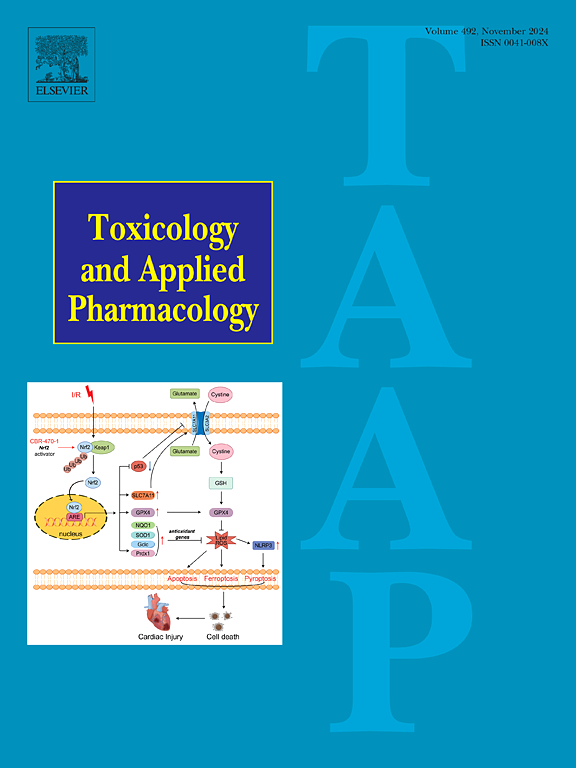Nilotinib impairs relaxation and temporal electro-mechanical integrity in human iPS-derived cardiomyocyte sheets
IF 3.3
3区 医学
Q2 PHARMACOLOGY & PHARMACY
引用次数: 0
Abstract
Introduction
Nilotinib, an anti-tumor tyrosine kinase inhibitor against BCR-ABL1, has been clinically reported to cause QT prolongation, but currently lacks evidence for a risk of torsade de pointes. Indeed, it is poorly understood why nilotinib rarely induces torsade de pointes.
Methods and results
We adopted two-dimensional human induced pluripotent stem cell-derived cardiomyocyte (hiPSC-CM) sheets to examine effects of nilotinib on their electrophysiological and mechanical properties besides intracellular calcium (Ca2+) dynamics. Nilotinib prolonged repolarization in concentration- and reverse-frequency-dependent manners but shortened the contraction-relaxation duration (CRD), which made the electro-mechanical window negative in hiPSC-CM sheets. These effects would correspond to “trigger” of drug-induced torsade de pointes. The drug also suppressed mitochondrial maximum respiration and decreased the peak amplitude and the decay rate of Ca2+ transients, which shortened the CRD and impaired relaxation function of the cell sheets, partly explaining the onset mechanism of nilotinib-induced heart failure in patients. Additionally, nilotinib-induced early afterdepolarization (EAD) fluctuated the conduction speed and repolarization, and shifted the electro-mechanical window in a negative direction. These phenomena increased beat-to-beat variability of repolarization and electrical vulnerability of the heart. Meanwhile, nilotinib caused the conduction delay by Na channel blockade, thereby blocking “substrate” formation for the arrhythmia persistence.
Conclusion
Nilotinib could deteriorate relaxation ability and temporal electrical integrity of the heart through impairing Ca2+ dynamics as well as repolarization phase, which were exacerbated by nilotinib-induced EAD. However, the drug only formed “trigger”, which would explain the lower occurrence of nilotinib-induced torsade de pointes.

尼洛替尼损害人类ips来源的心肌细胞片的松弛和时间机电完整性
尼洛替尼是一种针对BCR-ABL1的抗肿瘤酪氨酸激酶抑制剂,已被临床报道可导致QT间期延长,但目前缺乏证据表明其存在点扭转的风险。事实上,人们对尼罗替尼很少引起点扭转的原因知之甚少。方法和结果采用人诱导多能干细胞来源的心肌细胞(hiPSC-CM)二维片,观察尼洛替尼对其电生理和力学性能的影响,以及对细胞内钙离子动力学的影响。尼洛替尼延长了浓度和反向频率依赖的复极化,缩短了收缩-松弛持续时间(CRD),使hiPSC-CM片的电-机械窗口为负。这些效应对应于药物诱导的椎体扭转的“触发”。尼洛替尼还能抑制线粒体最大呼吸,降低Ca2+瞬态峰幅和衰减速率,缩短CRD,损害细胞片的松弛功能,部分解释了尼洛替尼诱发患者心力衰竭的发病机制。此外,尼洛替尼诱导的早期后去极化(EAD)使传导速度和复极化波动,并使机电窗口向负方向移动。这些现象增加了心跳间复极的可变性和心脏的电易感性。同时,尼洛替尼通过阻断钠通道导致传导延迟,从而阻断心律失常持续性的“底物”形成。结论尼洛替尼可通过损害Ca2+动力学和复极化相而使心脏舒张能力和时间电完整性恶化,而尼洛替尼诱发的EAD加重了这一作用。然而,该药仅形成“触发器”,这可以解释尼洛替尼诱导的椎体扭转发生率较低的原因。
本文章由计算机程序翻译,如有差异,请以英文原文为准。
求助全文
约1分钟内获得全文
求助全文
来源期刊
CiteScore
6.80
自引率
2.60%
发文量
309
审稿时长
32 days
期刊介绍:
Toxicology and Applied Pharmacology publishes original scientific research of relevance to animals or humans pertaining to the action of chemicals, drugs, or chemically-defined natural products.
Regular articles address mechanistic approaches to physiological, pharmacologic, biochemical, cellular, or molecular understanding of toxicologic/pathologic lesions and to methods used to describe these responses. Safety Science articles address outstanding state-of-the-art preclinical and human translational characterization of drug and chemical safety employing cutting-edge science. Highly significant Regulatory Safety Science articles will also be considered in this category. Papers concerned with alternatives to the use of experimental animals are encouraged.
Short articles report on high impact studies of broad interest to readers of TAAP that would benefit from rapid publication. These articles should contain no more than a combined total of four figures and tables. Authors should include in their cover letter the justification for consideration of their manuscript as a short article.

 求助内容:
求助内容: 应助结果提醒方式:
应助结果提醒方式:


